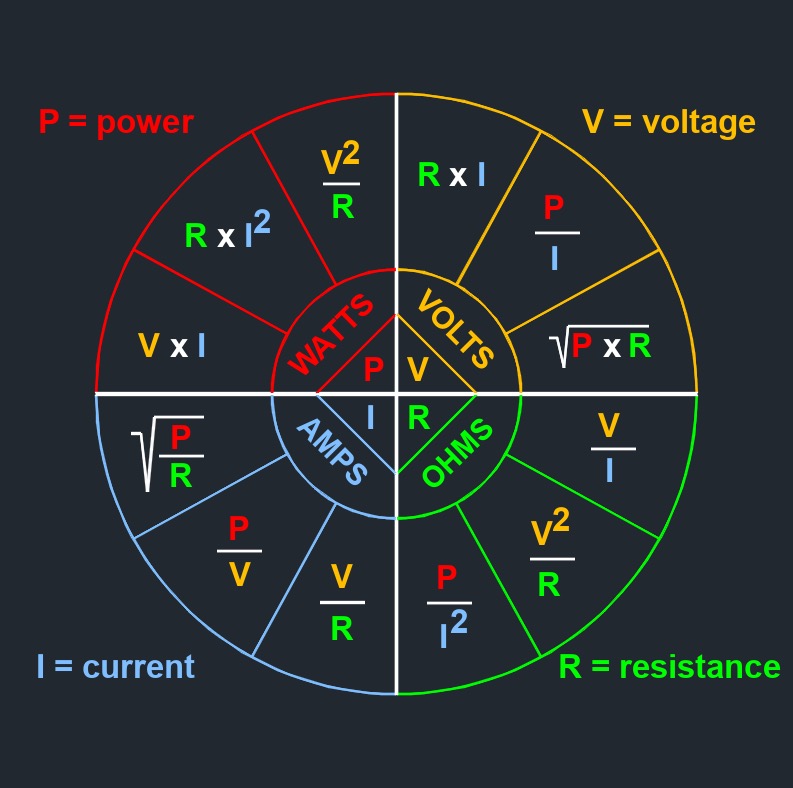Power Factor
Power Factor Formula |
||
|
\( PF \;=\; \dfrac{ P_t }{ P_a }\) (Power Factor) \( P_t \;=\; PF \cdot P_a \) \( P_a \;=\; \dfrac{ P_t }{ PF }\) |
||
| Symbol | English | Metric |
| \( PF \) = Power Factor | \( dimensionless \) | \( dimensionless \) |
| \( P_t \) = True Power | \( W \) | \( W \) |
| \( P_a \) = Apparent Power | \( W \) | \( W \) |

The power factor is a parameter in electrical systems because it indicates how effectively electrical power is being converted into useful work. A power factor of 1 (or 100%) means that all the power is being used for useful work, while a lower power factor indicates that some power is being wasted as reactive power. Power factor correction is often used to improve power factor and reduce energy wastage in electrical systems. This may involve the use of power factor correction capacitors or other devices to offset the effects of reactive power and improve the overall efficiency of the system.

Motor Power Factor Formulas | ||||
|---|---|---|---|---|
| To Find | Direct Current | Alternating Current | ||
| Single Phase | Two Phase Four Wire | Three Phase | ||
| Power Factor | - | \(\large{\frac{ input\; P }{ V \; I } }\) | - | \(\large{\frac{ input\; P }{ 1.732 \; V \; I } }\) |
